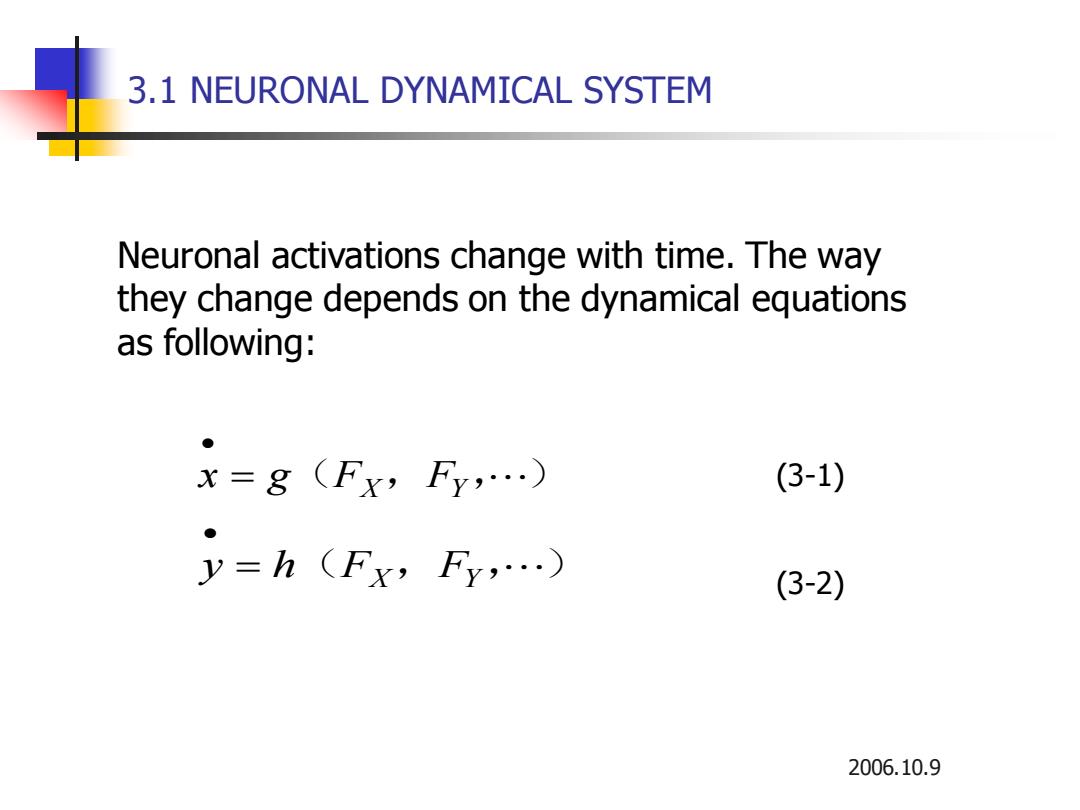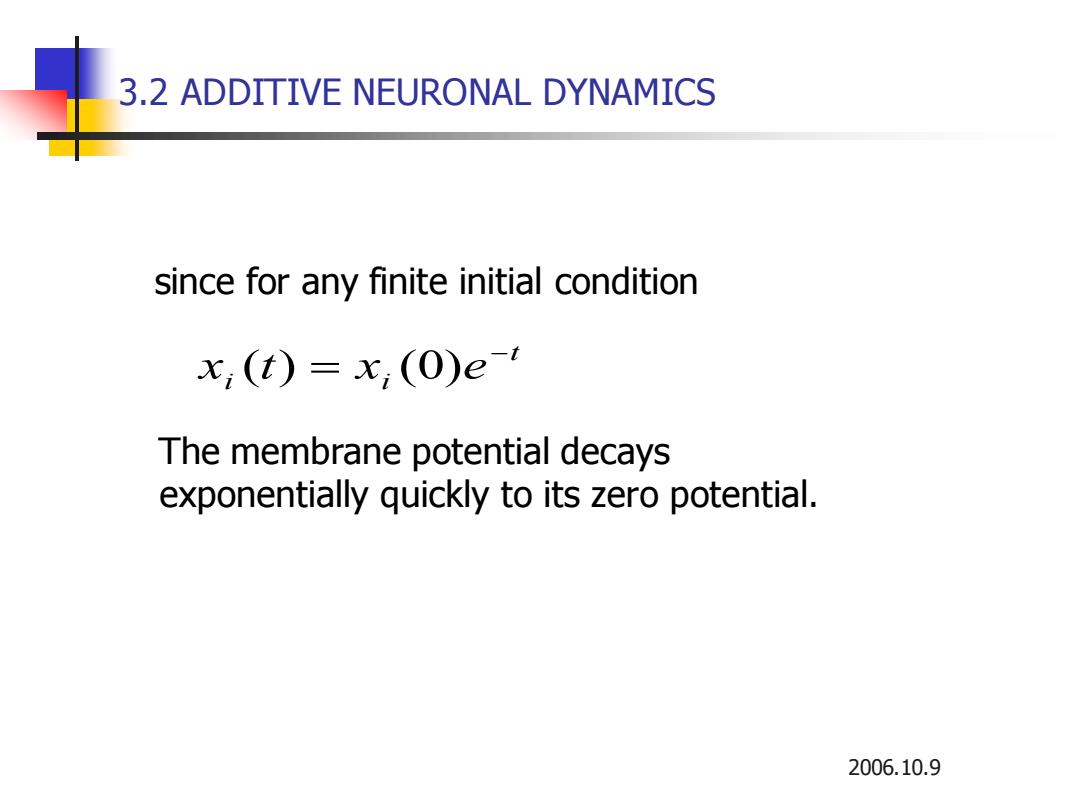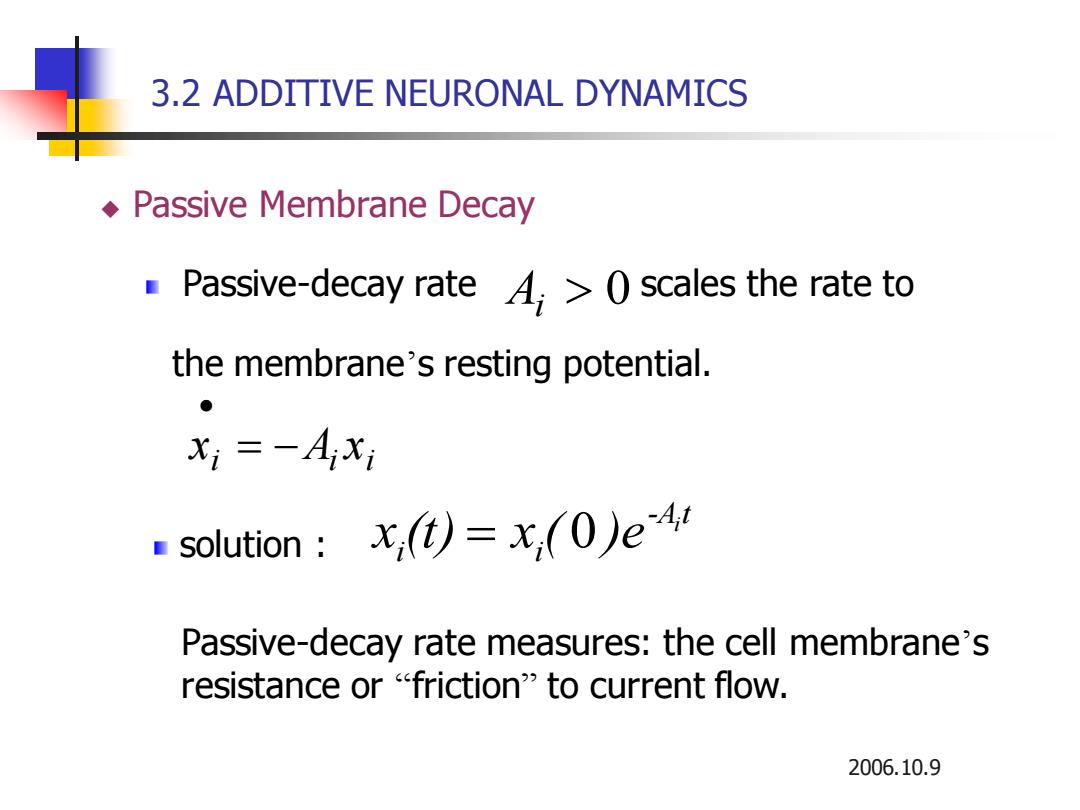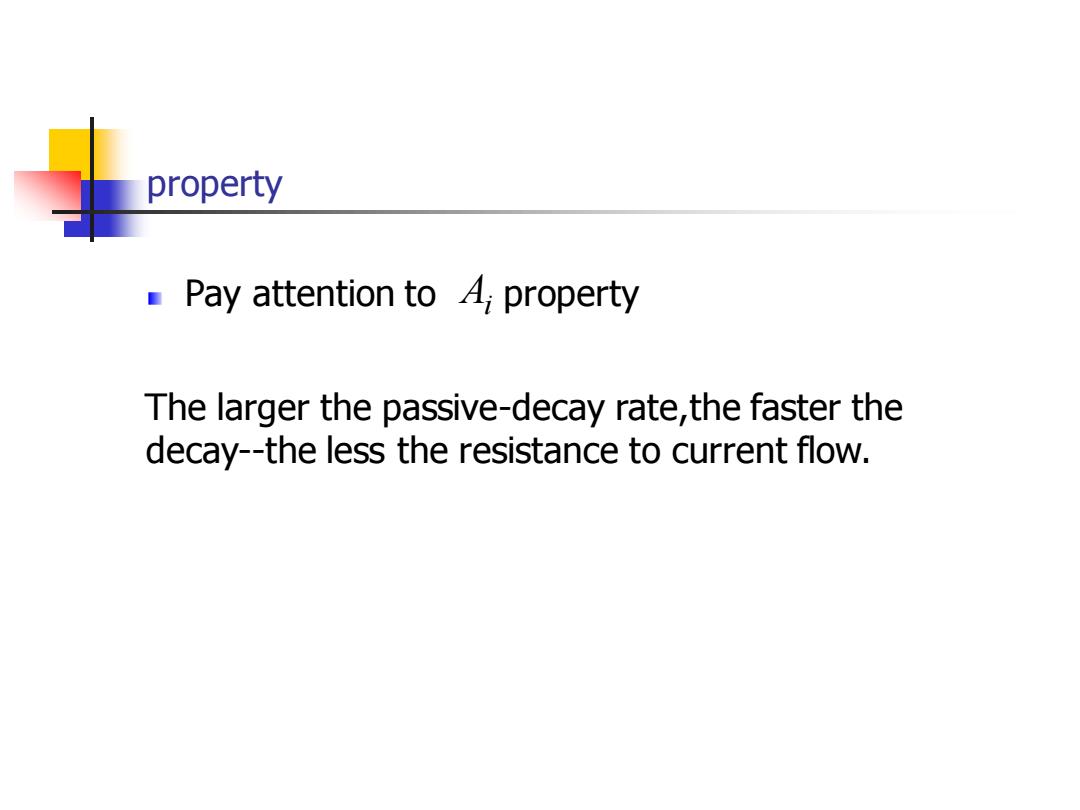
3.1 NEURONAL DYNAMICAL SYSTEM Neuronal activations change with time.The way they change depends on the dynamical equations as following: x=g(Fx,Fy…) (3-1) y=h(Fx,Fy,…y (3-2) 2006.10.9
2006.10.9 3.1 NEURONAL DYNAMICAL SYSTEM Neuronal activations change with time. The way they change depends on the dynamical equations as following: x = g(FX ,FY ,) • y = h(FX ,FY ,) • (3-1) (3-2)

3.2 ADDITIVE NEURONAL DYNAMICS first-order passive decay model In the absence of external or neuronal stimuli, the simplest activation dynamics model is: xi=一xi (3-3) (3-4) 2006.10.9
2006.10.9 In the absence of external or neuronal stimuli, the simplest activation dynamics model is: i xi = −x • y j = −yj • 3.2 ADDITIVE NEURONAL DYNAMICS (3-3) (3-4) ◆ first-order passive decay model

3.2 ADDITIVE NEURONAL DYNAMICS since for any finite initial condition x,(t)=x,(0)et The membrane potential decays exponentially quickly to its zero potential. 2006.10.9
2006.10.9 3.2 ADDITIVE NEURONAL DYNAMICS t xi t xi e − ( ) = (0) since for any finite initial condition The membrane potential decays exponentially quickly to its zero potential

3.2 ADDITIVE NEURONAL DYNAMICS Passive Membrane Decay Passive-decay rate ,>0 scales the rate to the membrane's resting potential. xi =-Ajxi solution:. ,()=x,(0)e4 Passive-decay rate measures:the cell membrane's resistance or friction"to current flow. 2006.10.9
2006.10.9 Passive-decay rate Ai 0 scales the rate to the membrane’s resting potential. solution : Passive-decay rate measures: the cell membrane’s resistance or “friction” to current flow. i i i x = −A x • 3.2 ADDITIVE NEURONAL DYNAMICS ◆ Passive Membrane Decay -A t i i i x (t) = x ( 0 )e

property Pay attention to 4;property The larger the passive-decay rate,the faster the decay--the less the resistance to current flow
Ai The larger the passive-decay rate,the faster the decay--the less the resistance to current flow. Pay attention to property property